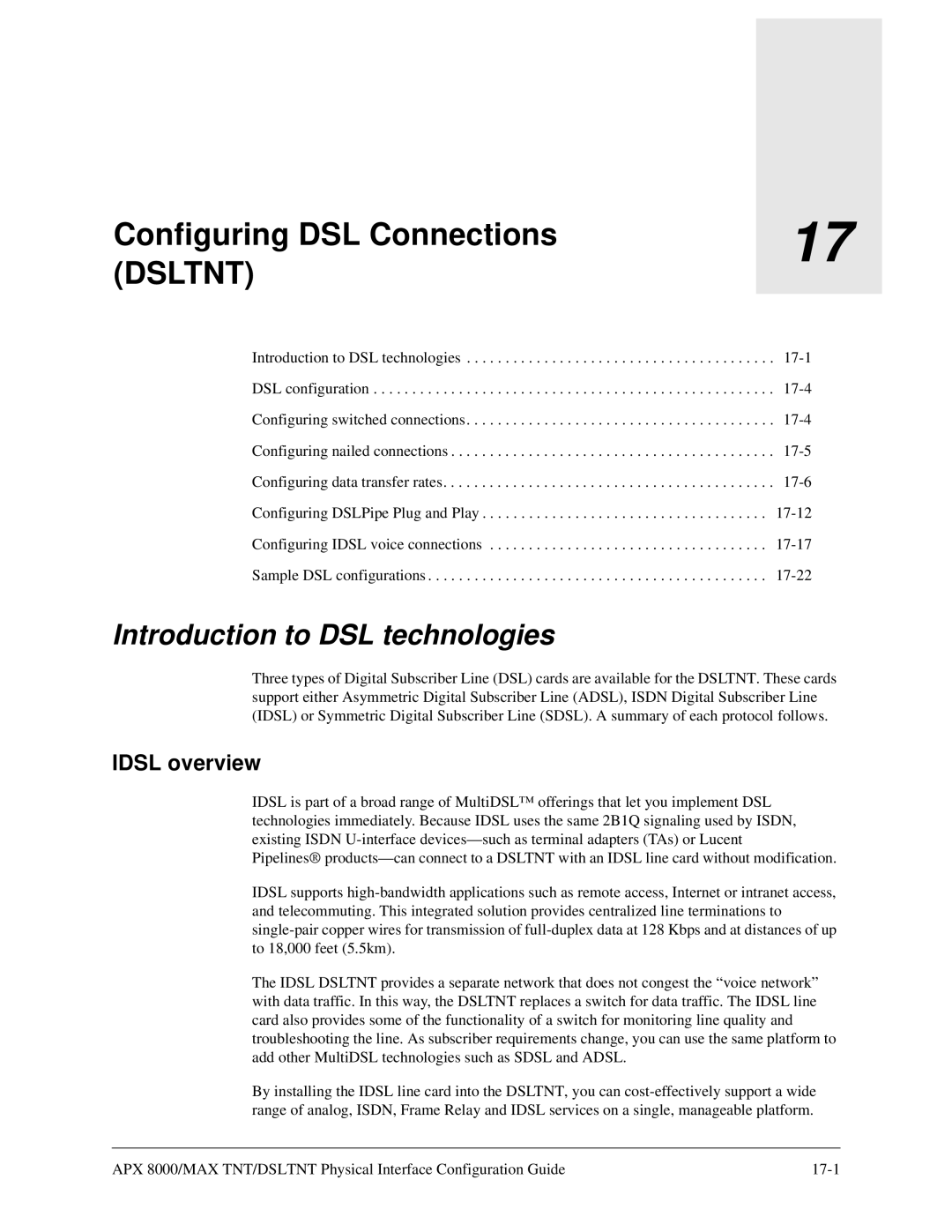Configuring DSL Connections | 17 |
| |
(DSLTNT) |
|
|
|
Introduction to DSL technologies . . . . . . . . . . . . . . . . . . . . . . . . . . . . . . . . . . . . . . . .
DSL configuration . . . . . . . . . . . . . . . . . . . . . . . . . . . . . . . . . . . . . . . . . . . . . . . . . . . .
Configuring switched connections . . . . . . . . . . . . . . . . . . . . . . . . . . . . . . . . . . . . . . . .
Configuring nailed connections . . . . . . . . . . . . . . . . . . . . . . . . . . . . . . . . . . . . . . . . . .
Configuring data transfer rates. . . . . . . . . . . . . . . . . . . . . . . . . . . . . . . . . . . . . . . . . . .
Configuring DSLPipe Plug and Play . . . . . . . . . . . . . . . . . . . . . . . . . . . . . . . . . . . . .
Configuring IDSL voice connections . . . . . . . . . . . . . . . . . . . . . . . . . . . . . . . . . . . .
Sample DSL configurations . . . . . . . . . . . . . . . . . . . . . . . . . . . . . . . . . . . . . . . . . . . .
Introduction to DSL technologies
Three types of Digital Subscriber Line (DSL) cards are available for the DSLTNT. These cards support either Asymmetric Digital Subscriber Line (ADSL), ISDN Digital Subscriber Line (IDSL) or Symmetric Digital Subscriber Line (SDSL). A summary of each protocol follows.
IDSL overview
IDSL is part of a broad range of MultiDSL™ offerings that let you implement DSL technologies immediately. Because IDSL uses the same 2B1Q signaling used by ISDN, existing ISDN
Pipelines®
IDSL supports
The IDSL DSLTNT provides a separate network that does not congest the “voice network” with data traffic. In this way, the DSLTNT replaces a switch for data traffic. The IDSL line card also provides some of the functionality of a switch for monitoring line quality and troubleshooting the line. As subscriber requirements change, you can use the same platform to add other MultiDSL technologies such as SDSL and ADSL.
By installing the IDSL line card into the DSLTNT, you can
APX 8000/MAX TNT/DSLTNT Physical Interface Configuration Guide |
